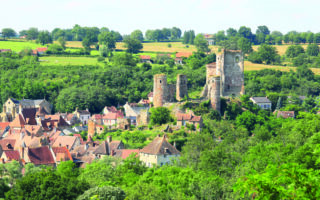Floods in the Languedoc


Property Buyers Guide
Flooding or “inondation” can be a serious problem in the Departments of Herault and Gard, in the Languedoc, South of France. It is therefore vital that all prospective home buyers are aware of flood zones, of the legal obligations that exist on vendors, and the steps one can take to protect oneself from buying a dream property which turns into a river bed once or twice a year! Our guide will help you avoid that particular pitfall, and tell you what to do in the time of “red alert” or “alerte rouge”.
There has been serious flooding in the Gard and Hérault in 1988, 1998, 1999, 2002, 2003 and recently in 2005. Since the most recent floods, the realisation is dawning on many in the region that this is becoming something of an annual event. Regional authorities are continuing to assess prevention measures and plan for better defenses.
History
On 8th and 9th of September 2002 the region was struck particularly hard by flooding which killed up to 26 people in the Gard, Hérault nd Vaucluse departments and caused widespread devastation. In 2002 as much as one year’s rainfall fell in two days. The French Méteo reported that more than 670 mm of rain fell in Anduze and somewhere between 500 – 600 mm of rain fell in Alès between the 8th and 9th. The flooding was widely reported in the international media and the region qualified for EU disaster relief. As a result, the authorities were able to rebuild and took measures to improve disaster planning, but there was further flooding in 2003 in which 5 people died, 168 roads were cut off, and 8,000 people had to be evacuated.
On September 6 – 7th this year, extreme rainfall caused flooding in Nîmes, Montpellier and many local villages. The centre of Nîmes was impassable, and levels rose to up to a meter in height. The floods cut off tens of thousands from electric power in the region and up to 150,000 telephone lines were cut (according to LCI TV). 8,000 residents were evacuated and there were disruptions in the rail network and the motorways causing many to spend the night in local hotels or railway carriages.
Meteorological Causes
Meteorologists claim that these storms are caused by a steam of cold air rising from Spain after the turn of summer up to the buffers of the mountains in the Pyrénées, the Cévennes and the Alps, and mixing with warm humid air drawn from the Mediterranean. The two air streams mix just above the Cévennes mountains, become cooler, and turn into very violent and heavy rain storms usually – but not exclusively – around the end of the summer.
The floods are caused by the extreme quantity of rainfall within a short space of time, and the hardness of the parched soil, which causes the water to run straight off it.
The Red Alert Public Warning System
The French Météo has a colour graded public warning system called “La Carte de Vigilence” to help residents take protective measures from storm weather. The “Carte de Vigilence” can be accessed directly on the top right hand corner of the French Meteo website and is announced on the local radio. The alert system applies equally to other dangerous meteorological conditions in addition to floods.
Red Alert – is defined by the expectation that 300 millimetres of rain are forecast to fall that day but the Marie decides whether the schools will shut. If 295 mm are forecast then you will be on Orange alert, even if the previous day 310 mm fell and that water is still dispersing! The authorities were criticised in hindsight in 2005 for not announcing a red alert on the second day of storms when less rain fell but conditions in fact were worse than the previous day which had been a red alert. It therefore pays to be cautious.
A translation of a Red alert warning:
An absolute vigilance is necessary; dangerous weather conditions of an exceptional intensity are expected; keep regularly informed of the development of the weather and follow the advice or instructions announced by the authorities.
A translation of an Orange alert warning:
Be very vigilant; dangerous weather conditions are expected; stay informed of the development of the weather and follow the advice given by the authorities.
Advice to the public is:
During Red Alerts parents are expected to collect their children as soon as possible from the school as there is a risk that you could be cut off from them later on. Schools have been known to be flooded, and the children have had to be rescued. Children in some villages have had to stay the night in the school because the school was cut off.
Be very careful if you have to travel, as traffic conditions can suddenly become very dangerous. Avoid outside leisure activities, and take shelter away from wooded areas.
Orange Alert:
Take care if you are travelling and avoid using the telephone and electrical appliances (it has been recommended that we remove plugs from sockets). Stay away from wooded areas.
Yellow alert:
Take care if you are engaged in activities affected by weather changes; weather conditions which are common in the region but occasionally dangerous (eg winds, summer storms) are expected; keep yourself informed of weather conditions.
Buying Property:
Flooding is a risk in this area, but there are precautions you can take to help minimise the risk of your buying a property that is routinely subject to flooding. Unfortunately, when being shown around a house not all estate agents and vendors are honest enough to tell you that the house is in a flood zone, and may be somewhat economical with the truth in their answers.
It pays therefore to make your own checks at the local Mairie who will be able to show you maps of flood zones, and check with the Prefecture. You could also check in the village itself with local neighbours and check maps of flood zones on line.
You are entitled to ask the vendor and estate agent directly whether the property has suffered from flood damage in the past. The estate agent is legally obliged to tell you if the house is subject to flooding and can be sued if he or she fails to inform you. It is also obligatory under French Law in this region for the Acte de Vente to include details of previous flood or storm damage.
Insurance:
If you decide to buy your house in certain well-known areas which metamorphose into river beds once a year, you are likely to find insurance extremely hard to come by. Some areas of the Gard and Hérault are almost untouchable from the point of view of insurance companies, so check that you can insure your property before you commit to buy.
If the property has been flooded just twice, your insurance premiums are going to rise considerably after the second occasion.
Advice if Flooded:
Official Advice of Hérault Department for surviving the floods:
If you are flooded:
Do:
1) Close doors, windows, air vents to reduce the entry of water
2) Shut off gas and electricity
3) Move to upper floors with some clean water for drinking, identity papers (after all this is France!) a battery powered radio, a torch, warm clothes, medicines and food, and await rescue.
4) Listen to the radio for instructions
5) Be ready to evacuate if requested to do so by the authorities – take your identity papers with you and close the building if possible.
Don’t:
1) Don’t try to walk through flooded areas – a car cannot manouever in 30 – 50 cms of water. Delay any journeys until later.
2) Don’t take an escalator or lift.
3) Don’t go to collect your children from school – the school will look after them.
4) Don’t use the telephone – leave lines free for the emergency services.
These are some useful sites:
Météo-France:
Carte de vigilance:
Site of the Ministry of Ecology:
Share to: Facebook Twitter LinkedIn Email
More in activity, alpes, estate agents, maps, schools, summer, travel
By FrenchEntrée
Leave a reply
Your email address will not be published. Required fields are marked *



